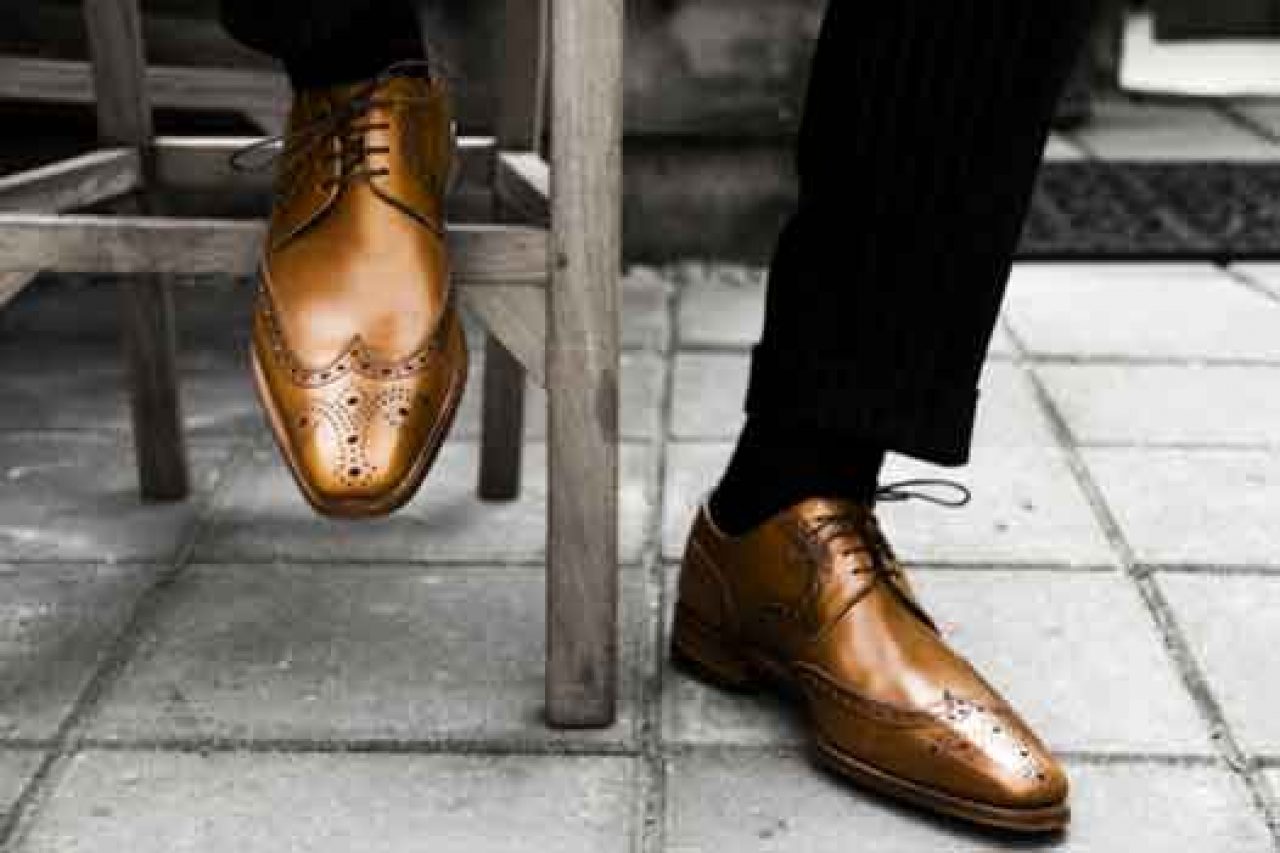So let’s start: we waterproof new shoes immediately after purchase. Properly, even twice, from a distance of 20 cm with an even mist of ANTIACQUA, we cover the entire shoe, especially next to the sole. An invisible layer of waterproofer protects against water and dirt and facilitates later cleaning. We wait at least ten minutes for the solvent to evaporate before we leave the house. Patent leather is the only type of leather which does not require it. Waterproofing is also beneficial for synthetics and textiles. Remember to test the product – some synthetics may not tolerate any maintenance.
When we use footwear in winter conditions – before the next waterproofing, if a shoe is dirty, it should be cleaned first. Don’t forget about the rules for cleaning and drying. Leather shoes (suede and grain leather) after each contact with snow, water, mud should be carefully wiped and cleaned. MULTI CLEANER will be helpful here. After cleaning, the inside of shoes should be stuffed with paper (e.g. old newspapers) and set aside for a few hours in a dry place. Heating with a hair dryer or exposure to a heat source (heater, stove, fireplace) is absolutely inadvisable. This causes excessive drying of fibers and – as a consequence – loss of flexibility and cracking of the leather face. When shoes have dried slightly, it is worth replacing the newspapers with matching shoetrees so that the footwear keeps its shape after drying.
We clean suede footwear from small dirt and restore fluffiness using a dedicated brush with several types of bristles (including rubber ones). Suede cleaning cube and cleaning agent – NUBUCK CLEANER will also be useful for daily maintenance. Moisture and other weather conditions can affect the color of our favorite shoes (darken or brighten them), so it’s worth buying a RAVVIVANT SPRAY color renovator available in 10 colors, or the ecological NANO RAVVIVANT available in 27 colors. If you are not afraid of slight color darkening and you want to visibly revive and make the leather more flexible – we recommend light OIL SPRAY. For trekking and winter footwear made from heavy, thick leathers with oily tan (e.g. hiking boots), i.e. leather that changes color after bending or scratching with your fingernail – we recommend GREASE FOR SHOE or OIL SPRAY fat, or a thick oily CRAZY OIL emulsion.
After cleaning, grain leather shoes should be nourished. We grab SHOE WAX or CREAM ELEGANCE. During particularly cold and snowy winter, it is recommended to apply even two layers of paste or cream, each after the previous one has been absorbed or dried. Keep in mind that after polishing shoes, we shine the surface of the footwear thoroughly every time. New Cocciné CLEVER GLOVE polishing glove will certainly be useful.
At the end of the process, the shoe should be properly waterproofed again. We use ANTIACQUA for ordinary protection.
And don’t forget about a warm insole inside a shoe!





















